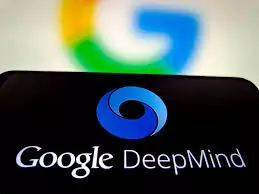Google DeepMind Unveils Genie 3: AI-Powered 3D World Model to Advance Human-Like Intelligence
Google DeepMind unveils Genie 3, a powerful AI tool to build 3D worlds with real-time interaction and memory, aimed at advancing human-like AI systems.
Google DeepMind's Genie 3 creates interactive 3D worlds where AI and humans can interact in real time.

Google DeepMind has introduced Genie 3, a cutting-edge version of its AI-powered "world" model designed to generate interactive 3D environments in real time. The tool allows both humans and AI agents to navigate and interact within these digital spaces, paving the way for more human-like artificial intelligence experiences.
Genie 3 significantly enhances the capabilities of its predecessor, offering extended interaction durations and improved memory of visual elements. Unlike Genie 2—which could only sustain interaction for about 10 to 20 seconds—Genie 3 enables experiences lasting several minutes and remembers object placements for up to one minute, even if a user temporarily looks away.
These AI-generated worlds run at 720p resolution and 24 frames per second, creating smoother and more immersive visuals. A new feature, “promptable world events,” lets users alter virtual conditions—like weather changes or new character entries—through simple text commands.
Unlike traditional game development, which relies on manually created assets, Genie uses prompts to build fully AI-generated environments. These can serve various purposes, from training robotics and AI systems to enabling learning and entertainment experiences.
The previous version, launched in December 2024, was limited in scope due to its short interaction times and unstable graphics. Genie 3 aims to address those limitations, offering more stable and realistic visuals and user experiences.
However, the new model isn’t widely available yet. Google DeepMind is rolling out Genie 3 as a limited research preview for select academics and creators. This cautious launch allows the team to study risks and implement safety measures. Interaction features remain restricted for now, and readable text within the 3D worlds will only appear if part of the original prompt.
The project is led by a former co-lead of OpenAI’s Sora video generation initiative, bringing experience from the forefront of generative AI development.

